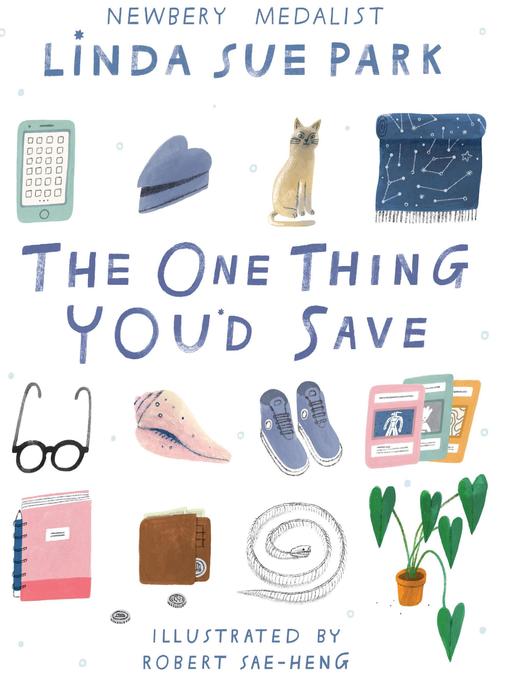
The One Thing You'd Save
کتاب های مرتبط
- اطلاعات
- نقد و بررسی
- دیدگاه کاربران
نقد و بررسی

Starred review from January 25, 2021
In a classroom, teacher Ms. Chang poses a premise: “Imagine that your home is on fire. You’re allowed to save one thing./ Your family and pets are safe, so don’t worry about them./ Your Most Important Thing. Any size.” The students respond—some share, others contemplate privately—traversing a wide terrain, including the practical (“MY DAD’S WALLET. DUH”) and deeply personal remembrances. One child reflects silently about their “total dump” of a home (“Be glad to see it burn down”), while another secretly recalls escaping an actual burning building: “The only thing you worry about saving is your own sorry skin.” Readers may not realize that the volume is a collection of poems until they read Park’s closing note, which explains her inspiration: traditional Korean sijo verse, which consists of three lines of 13 to 17 syllables and is sometimes broken into six shorter lines. This relatively flexible structure creates a rhythmic variety of declarations, reflections, interjections, and occasional dialogue employed throughout, complemented by Sae-Heng’s gray-toned, sketchlike illustrations. While each child’s voice isn’t entirely distinct, the class’s camaraderie and caring spirit comes through clearly, poised to inspire thoughtful classroom discussion. Ages 8–12.

Starred review from February 1, 2021
A poetic exploration of middle-grade values. Newbery Medalist Park presents a provocative collection of narrative poems inspired by sijo, a 14th-century Korean syllabic verse form. Teacher Ms. Chang poses to her class a variation of the timeless desert-island question: "Imagine that your home is on fire," and, while family and pets are spared, "you're allowed to save one thing." Chang's students react well to this "good homework," sharing with their classmates a multitude of objects they'd protect from the hypothetical flames. Some choose eminently practical items like a cellphone ("somebody's gotta call 9-1-1, right?") and "MY DAD'S WALLET. DUH" (because "if a fire burns everything up, you're gonna need money. A lot"). Other treasures reflect differing levels of maturity and self- involvement: a mother's insulin kit, a rug to smother flames, sneakers like "Jeremy Lin wore when he scored thirty-eight points / against the Lakers" and for which the student had saved pennies for months, a "muddy blue" sweater May's father's mother had knit for her father that her other grandmother then unraveled and reknit for her. Coupled with debut illustrator Sae-Heng's accessible grayscale sketches of the objects, often in situ, Park's subjects' mementos offer middle-grade readers much food for thought regarding what one values and how others can touch one's life. Names and other details indicate a diverse class. A note on sijo concludes the volume. Park's extended rumination has the power to bring us home. (Verse fiction. 8-12)
COPYRIGHT(2021) Kirkus Reviews, ALL RIGHTS RESERVED.

























دیدگاه کاربران